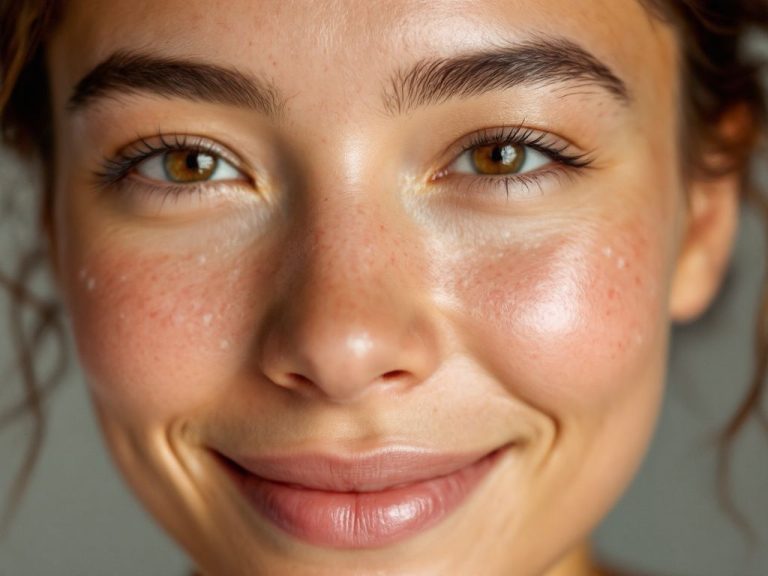Have you ever found yourself staring in the mirror, wondering why your skin doesn’t reflect all the effort you put into your skincare routine? I mean, you’ve got cleansers, exfoliants, serums—the whole lot lined up on your bathroom shelf. Yet somehow, pesky breakouts still manage to pop up uninvited, especially when you’ve got that big event just around the corner. It’s no fun, right? But here’s the kicker: the answer might not be found in another cream or potion, but in your kitchen. Yep, we’re diving into the fascinating world of the diet-acne connection—a topic that’s generating heaps of buzz lately.
Table of Contents
ToggleWhy Your Plate Matters More Than You Think
Before dismissing this as just another diet fad, let’s be real. Our diet holds more power over our skin than we’ve been led to believe. Trust me, it’s not just about grease and sugar alone. Multiple factors contribute to acne, and sometimes, it’s an innocent mistake in our meal choices that’s triggering those breakouts. So hang tight, we’re exploring how tweaking what we eat could be a game-changer for our skin.
The Science-y Stuff Made Simple
Now, gather ‘round because here’s where the diet-acne connection gets real. Our skin isn’t independent from the rest of our body. It reacts based on what’s going on internally, and your diet’s clout lies in its ability to mess with your hormones. What you eat directly affects insulin levels, sebum production, and inflammation—all three act like the ultimate trifecta encouraging acne if not in balance.
Remember, this isn’t to say you need to swear off all your favorite foods forever. Nah, we’re all about balance and finding smart swaps that work for you, because, spoiler alert—they do exist.
Foods That Could Fuel Those Breakouts
Sugar’s Not So Sweet Side

First things first, sugar and simple carbohydrates: life’s true frenemies. They’re like the mate who always insists on partying hard—they spike your insulin levels, which in turn affects sebum production (that’s the oily stuff from sebaceous glands), and before you know it, your face is crying out for help. Steering clear from added sugars and high glycemic foods can be a pretty straightforward step.
**High Glycemic Load Foods**: Avoid refined grains like white bread, sodas, candies, pastries—think sweet treats and easy carbs. Aiming for whole grains like oats or quinoa can be a good shout.
Dairy: The Unsuspected Player
Then there’s dairy—deceptive in its delicious disguise. While not everyone reacts the same, there’s enough evidence hinting towards milk, particularly skim milk, having a notable relationship with acne issues. Why? Hormones from milk could be exacerbating the acne situation by influencing other hormones in your system.
If you suspect dairy is playing havoc with your skin, there’s no harm in slowly testing alternatives, like almond or oat milk. Take note—gradual changes give your body a fair chance of adjusting. Keeping a small food journal could help in tracking any skin changes during this time.
Discover the Healing Plate
Anti-Inflammatory Allies
Swap that negativity for goodness’ sake! Here are foods that positively charm your skin—giving it that enviable glow.
- Omega-3 Fatty Acids: Foods such as fatty fish (like salmon or mackerel), chia seeds, and flaxseeds are packed with omega-3s, known for their anti-inflammatory properties. These guys calm redness and can ease swelling.
- Antioxidant-Rich Choices: Load up on colorful fruit and veg that literally feed your skin. Berries, beetroot, and leafy greens do wonders by fighting the pesky free radicals and lowering inflammation. You get what you pay for with skin-tinting foods.
- Whole Foods Over Processed Foods: Reach out for whole grains, legumes, and nuts. Their vitamins and minerals pamper your skin with every crunchy, wholesome bite.
Hydration Heroics

Don’t underestimate water. Seriously, hydrate! We hear it all the time, but its impact is massive. Flushing out toxins reflects quite clearly on your skin’s clarity. Infuse your water with lemon or cucumber to stir things up. Eating foods high in water content, like watermelon or cucumber, can supplement hydration in a refreshingly tangible way.
A Sustainable Approach to Eating for Your Skin
Begin with Small, Lasting Changes
Forget diet overhauls that are hard to sustain. Instead, give gradual changes a shot—you can ease certain crash causers out of your diet. While you’re at it, introduce nutrient-dense insolubles. Over time, your skin can slowly adjust itself, resulting in perhaps less noticeable but real, lasting improvements.
Balance Is Key
Balance, balance, balance. Keeping your favorite foods as treats, not staples, helps maintain a love-filled relationship with your meals. This small shift can leave room for consistently choosing skin-healing foods without feeling deprived.

Mind-Gut-Skin Connection
Oh, and one more thing to squeeze in—your mind’s an important player too. stress out about your plate, stress hormones could counterbalance your dietary resolutions. Trust in moderation—it’s all tied together, promise.
Cautionary Tales: Common Mistakes to Watch For
Overcorrecting the Diet
While enthusiasm is great, moderation wins the long game. Ditching an entire food group based on one breakout can mess with your nutrient balance. Calcium and vitamin deficiencies say hello when you cut out dairy, so listen to your body and include substitutes where needed.
Impatience Isn’t the Way
Patience and endurance: these virtues are crucial. Our skin takes a few weeks to present changes externally. If you’re making changes, let them stick for about a month or two before expecting big changes. Real transformation is gradual. Comparison steals joy, so focus on your personal changes instead.
Final Thoughts on the Diet-Acne Relationship
Sure, the diet-acne connection is layered. It isn’t the be-all and end-all solution for every skincare issue under the sun. But believe it, there’s tangible power here, and so it deserves a spot in your skincare toolkit. Our diet significantly affects skin conditions, and while it doesn’t hold all the answers, it pretty much shaped the background of a story we’re all trying to write—healthier, clearer skin. Give some of these changes a fair shot, and who knows? Your skin could be your new best friend, glowing beautifully as testimony to the feasts you enjoy yet keep gracefully in balance. Remember, when in doubt, reach out to a nutritionist or dermatologist to help personalize your journey.
Frequently Asked Questions
Is there a proven link between diet and acne?
While there is no conclusive proof that diet directly causes acne, research suggests that certain dietary choices can influence acne severity. Studies indicate that high glycemic foods, dairy products, and a Western diet high in fat and sugar may exacerbate acne, whereas low glycemic diets rich in fruits, vegetables, and whole grains may help reduce acne severity[1][3][5).
Which foods are most likely to worsen acne?
Foods that are high in glycemic index, such as pasta, white rice, white bread, and sugary beverages, can worsen acne by causing spikes in blood sugar and insulin levels. Additionally, dairy products, particularly milk, and foods high in saturated fats and refined carbohydrates are associated with increased acne risk[2][3][5).
Can a low glycemic diet help improve acne?
Are there other dietary components that can help with acne?
Besides a low glycemic diet, other dietary components that may help with acne include omega-3 fatty acids, which can reduce inflammation, and prebiotics, which support healthy gut bacteria and can improve carbohydrate metabolism and insulin sensitivity. Foods rich in omega-3s, such as fatty fish, and prebiotic supplements may be beneficial for acne management[4][5).
References







